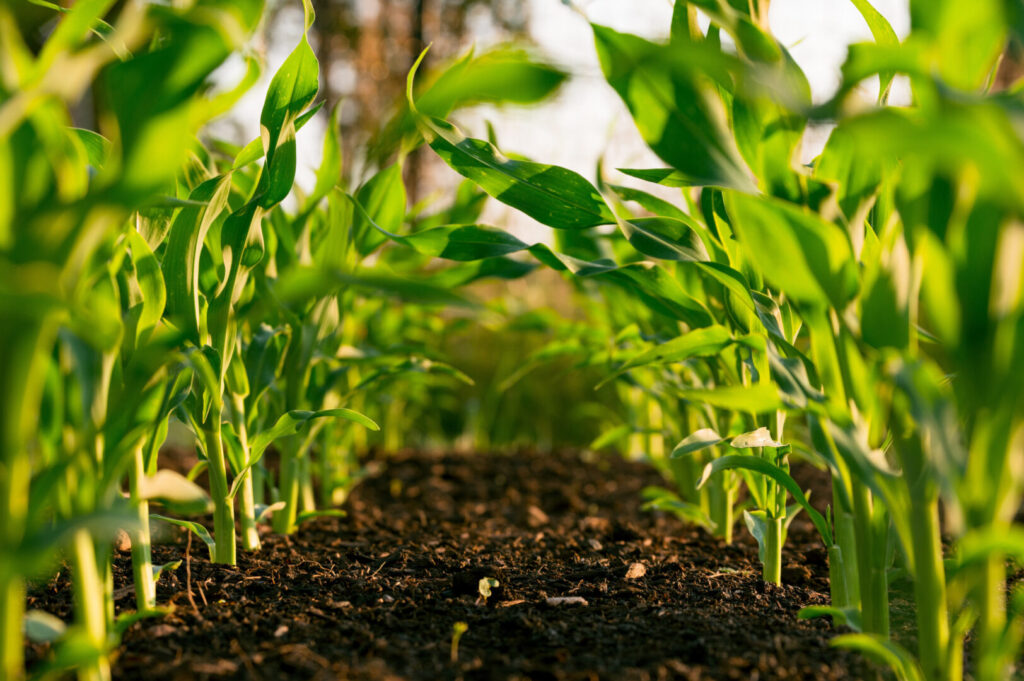The overgrazing and the monoculture are two of the main causes of the soil degradationHowever, this process can be slowed down and eventually improve health if certain actions are taken, which are already being implemented in some parts of the world.
According to the UNOne third of the world's soil has already been degraded, a fact that is highly relevant since it provides 95% of the food consumed by human beings. Once the soil is degraded, the quality and quantity of crops is reduced, its capacity to sustain animals and plants is diminished, and it loses the chemical and biological qualities that sustain the millions of organisms that live in it, notes Stefan Ellerbeck in an article in World Economic Forum.
With the world's population having reached 8 billion, the demand for agricultural products is on the rise and is causing more and more grasslands and forests to be converted into fields and pastures for agriculture. The intensive agricultural practices alter the soil structure, he said. Silvia Presselresearcher at the Natural History Museum of London.
"(Such practices) accelerate surface runoff and soil erosion, loss of organic matter and fertility, and disruption of water, organic carbon and plant nutrient cycles. When soil is degraded, the processes taking place within it are damaged, leading to a decline in soil health, biodiversity and productivity, which causes problems at all levels of many ecosystems and has major environmental consequences, such as flooding and mass migrations," he explains.
An investigation by Swiss Re Institute reveals that one-fifth of countries are at risk of ecosystem collapse due to biodiversity loss.
These environmental changes also threaten global food security. Currently more than 800 million people go to bed hungry every night and it is estimated that by 2050 we will need to produce an additional 60% of food to sustain a world population of more than 9 billion, according to UN estimates.
What are the solutions for soil in agriculture?
In order to feed a rapidly growing world population, agricultural practices need to change and adopt a sustainable approach that avoids further land degradation. The technological advances are helping to achieve this. Here are some agricultural innovations that are already making a difference:
- New agricultural tools: The use of traditional tools, such as plowing, can damage the soil by exposing microbes crucial to its health. Danish company Agrointelli has developed a robot that can plant and weed in a less damaging way, reports the BBC.
- Soil control: The BBC also highlights the work of UK-based Harvest Agri, which has developed a soil testing device called the microBioMeter. Farmers can take a soil sample and then use an app on their mobile device that determines which fungal and bacterial microbes are present. Moreover, European governments have set up the EU Soil Observatory to collect and track soil data. According to the EU, this will contribute to research and policy development.
- Agroforestry: It is a combined approach to land management in which trees and shrubs are integrated with cropping and livestock systems, explains the UK's Woodland Trust. Trees create their own microclimate, which can help crops and protect them from water and wind damage.
- Satellite ground monitoring: Two members of the World Economic Forum's UpLink innovation platform are using satellite data and AI technology to help solve soil problems. SoilWatch is helping to regenerate degraded soil in East Africa by using technology to enable low-cost, nature-based solutions.
Soilify promotes the restoration of degraded land in South Asia by monitoring changes in soil carbon, thereby helping to reduce the risks to farmers associated with switching to more sustainable methods.
UpLink is an open innovation platform that creates opportunities for entrepreneurs to connect with the investors, corporate partners, experts and other organizations they need to grow. Its goal is to spark an entrepreneurial revolution and support positive systemic change for people and the planet.
Benefits of a healthy soil
- The Natural History Museum in London states that soil is vital to life on Earth in many other ways besides providing food.
- Soil minerals and microbes play a vital role in cleaning water and filtering contaminants.
- The soil helps regulate water movement and helps prevent flooding by controlling whether rain and irrigation water flows over or through it.
- Soil organisms can kill harmful bacteria and can be used in medicine. The group of antibiotics that make up penicillin have their origin in soil.
- Soil plays a vital role in climate change mitigation. It is the largest carbon sink after the oceans, helping to regulate atmospheric CO2 concentrations.
Source: World Economic Forum


